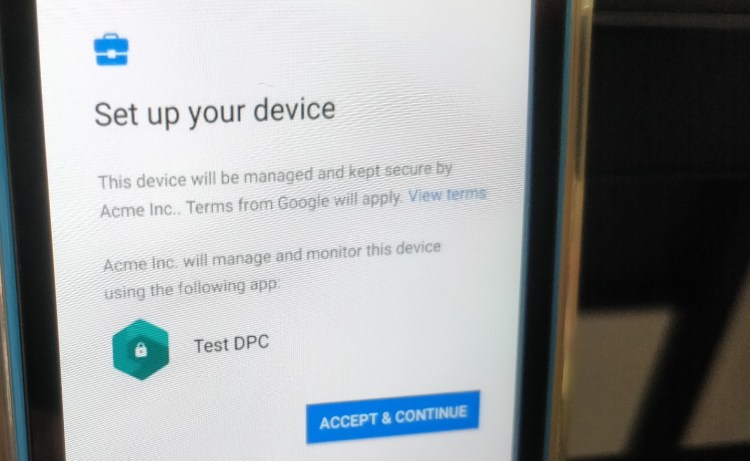testsetset
Setting up a new smartphone out of the box isn’t exactly rocket science these days. But for businesses with hundreds or thousands of employees to cater to, deploying and configuring devices across an entire organization is a little less straightforward.
With that in mind, Google has announced a new “zero-touch” enrollment service to make it easier for companies to preconfigure devices so they’re good to go when they land in employees’ hands.
Google has long targeted organizations with an enterprise-grade Android incarnation that sports special versions of the Google Play store, security tools, and centralized management dashboards. Different businesses will have different configuration needs for their devices, which could even vary on a department-by-department or even employee-by-employee basis, and getting everyone set up can be time-consuming. This is where zero-touch helps — the devices ship with nearly all the settings established in advance.
![]()
June 5th: The AI Audit in NYC
Join us next week in NYC to engage with top executive leaders, delving into strategies for auditing AI models to ensure fairness, optimal performance, and ethical compliance across diverse organizations. Secure your attendance for this exclusive invite-only event.
It’s pretty much the same as Apple’s device enrollment program, which rolled out back in 2014, and which also promises zero-touch configuration for IT.
“For administrators, zero-touch enrollment removes the need for users to configure their devices manually and ensures that devices always have corporate policies in place,” explained Google product manager James Nugent. “Support is also much easier, with no extra steps for end-users; they just sign in and get access to their work apps and data.”
It’s worth noting here that this service does require carrier opt-in. And to kick things off, zero-touch is only available on Google’s own Pixel phones through Verizon in the U.S., from today. Elsewhere, other carriers planning to offer zero-touch include AT&T, Sprint, and T-Mobile in the U.S.; BT and Deutsche Telekom in Germany; and Softbank and Telstra in Asia-Pacific.
A Pixel-only offering would be fairly limited, of course, which is why Google said that it’s working with a bunch of third-party Android device manufacturers to expand zero-touch. These include Samsung, HTC (naturally), Huawei, Sony, LG, HMD Global (Nokia), BlackBerry, and Motorola, among others.
The first third-party devices to support zero-touch will be the Huawei Mate 10 and Sony Xperia XZ1 and XZ1 Compact, with support arriving “in the coming weeks,” Nugent confirmed.

